- عنوان کتاب: AN INTRODUCTION TO GAUGE-HIGGS UNIFICATION
- نویسنده: Craig LeGrande
- حوزه: توابع ریاضی
- سال انتشار: 2025
- تعداد صفحه: 278
- زبان اصلی: انگلیسی
- نوع فایل: pdf
- حجم فایل: 8.16 مگابایت
در سال 2012 بوزون هیگز (ذره هیگز) در LHC (برخورد کننده بزرگ هادرون) در سرن (سازمان اروپایی تحقیقات هسته ای) در سوئیس کشف شد. وجود بوزون هیگز با آزمایش های متعدد از آن زمان به طور قطعی ثابت شده است. در مدل استاندارد فیزیک ذرات، بوزون هیگز آخرین قطعه ای بود که علاوه بر لپتون ها، کوارک ها و بوزون های گیج یافت شد. کشف بوزون هیگز، علاوه بر کشف یک ذره جدید، پیامدهای عمیقی برای فیزیک ذرات دارد. اغلب در رسانه های خبری گفته می شود که بوزون هیگز منشأ توده ها در جهان را توضیح می دهد. این کاملا گمراه کننده است. بیشتر توده های ماده ای که در زندگی روزمره خود می بینیم بر حسب جرم پروتون ها و نوترون ها توضیح داده می شوند. مشخص است که تنها 2 درصد از جرم پروتون ها و نوترون ها به دلیل بوزون هیگز است. بقیه توسط تعاملات قوی ایجاد می شود. این واقعیت توسط Y. Nambu قبل از ارائه نظریه P. Higgs اشاره شده بود. اهمیت کشف بوزون هیگز در مکان دیگری نهفته است. بوزون هیگز در مدل استاندارد که در آن نیروهای الکترومغناطیسی و ضعیف با هم متحد می شوند، کاملاً ضروری است. برای اینکه دو نیروی متمایز در یک نیروی واحد متحد شوند، به مکانیزمی نیاز است که به وسیله آن یک نیرو در انرژی های کم به دو نیروی متمایز متمایز شود. بوزون هیگز در این فرآیند نقش اساسی دارد. به عبارت دیگر، کشف بوزون هیگز سناریوی اتحاد نیروها را ایجاد کرده است. با این حال، ما هنوز درک خوبی از بوزون هیگز نداریم. از نقطه نظر ریاضی، فرآیند تمایز یک نیروی منفرد به دو نیروی متمایز فرآیندی است که در آن تقارن سنج تا حدی خود به خود از بین میرود. مکانیسم هیگز مکانیزمی برای شکستن تقارن سنج خود به خود است و در مدل استاندارد به کار می رود. جزئیات مکانیسم هنوز به صورت تجربی بررسی نشده است. مکانیسم دیگری برای شکستن تقارن سنج خود به خود وجود دارد. این مکانیزم هوسوتانی است که در آن تقارن گیج در فضازمان چهاربعدی به طور خود به خود توسط دینامیک جزء بعدی میدان های گیج شکسته می شود. مکانیسم تعمیم اثر آهارونوف-بوم در مکانیک کوانتومی به بعد پنجم است. بوزون هیگز به صورت یک حالت نوسان چهار بعدی فازهای آهارونوف-بوم ظاهر می شود. میدانهای گیج و بوزون هیگز با هم متحد میشوند، بنابراین این سناریو یکسان سازی گیج-هیگز نامیده میشود. برهمکنش بوزون هیگز توسط اصل گیج کنترل می شود. جرم محدود بوزون هیگز توسط اثرات کوانتومی ایجاد می شود. مکانیسم هوسوتانی در سال 1983 کشف شد. در آن زمان توصیف ماهیت کایرال برهمکنش های ضعیف کوارک ها و لپتون ها دشوار بود و هیچ مدل واقعی ساخته نشد. از آن زمان پیشرفت خوبی در تئوری میدانی در مورد مداری و فضای تاب خورده راندال-ساندروم حاصل شده است. در سال 2010، مدل های وحدت سنج هیگز واقع بینانه در دسترس قرار گرفتند. در این کتاب مکانیسم هوسوتانی و سناریوی یکسان سازی گیج هیگز از مبانی توضیح داده شده است. این کتاب هم برای دانشجویان پیشرفته در مقطع کارشناسی و کارشناسی ارشد و هم برای محققان مرزی در نظر گرفته شده است. حداقل دانش تئوری میدان فرض می شود. پس از بررسی مکانیسم هیگز و مدل استاندارد در فصل 2، مکانیسم هوسوتانی را در فصل 3 معرفی می کنیم که اثر آهارونوف-بوهم را به نظریه گیج غیر آبلی تعمیم می دهد. پتانسیل موثر در فصل 4 معرفی شده است، که با آن می بینیم که چگونه شکست تقارن سنج دینامیکی توسط مکانیسم Hosotani رخ می دهد. شکست تقارن گیج روی شبکه نیز مورد بررسی قرار گرفته است. در فصل 5 ویژگی های کلی نظریه میدان در ابعاد بالاتر بررسی می شود. علاوه بر مدل ابعاد اضافی جهانی، ما چند مدل یکسان سازی سنج هیگز را در مدار مسطح M4 × (S1/Z2) بررسی می کنیم. مشکلات در داشتن مدل های یکسان سازی گیج-هیگز واقع بینانه در مدارهای مسطح تشخیص داده شده است.
In 2012 the Higgs boson (the Higgs particle) was discovered at the LHC (Large Hadron Collider) at CERN (European Organization for Nuclear Research) in Switzerland. The existence of the Higgs boson has been firmly established by numerous experiments since then. In the standard model of particle physics the Higgs boson had been the last piece to be found in addition to leptons, quarks and gauge bosons. The discovery of the Higgs boson, besides being the discovery of a new particle, has profound implications to particle physics. It is often said in the news media that the Higgs boson explains the origin of masses in the universe. This is quite misleading. Most masses of matter which we see in our daily life are explained in terms of the mass of protons and neutrons. It is known that only 2% of the mass of protons and neutrons is due to the Higgs boson. The rest is generated by strong interactions. This fact had been pointed out by Y. Nambu before P. Higgs proposed his theory. The importance of the discovery of the Higgs boson lies in a different place. The Higgs boson is absolutely necessary in the standard model in which electromagnetic and weak forces are unified. In order for two distinct forces to be unified in a single force, one needs a mechanism by which one force differentiates into two distinct forces at low energies. The Higgs boson plays an essential role in this process. In other words, the discovery of the Higgs boson has established the scenario of the unification of forces. However, we still do not have good understanding of what the Higgs boson is. From the mathematical point of view, the process of a single force differentiating into two distinct forces is a process in which gauge symmetry partially breaks down spontaneously. The Higgs mechanism is a mechanism for spontaneous gauge symmetry breaking, and is employed in the standard model. The details of the mechanism are yet to be explored experimentally. There is another mechanism for spontaneous gauge symmetry breaking. It is the Hosotani mechanism in which gauge symmetry in four-dimensional spacetime is spontaneously broken by dynamics of the fifth-dimensional component of gauge fields. The mechanism is the generalization of the Aharonov-Bohm effect in quantum mechanics to the fifth dimension. The Higgs boson appears as a four-dimensional fluctuation mode of Aharonov- Bohm phases. Gauge fields and the Higgs boson are unified, thus the scenario being termed gauge-Higgs unification. The interaction of the Higgs boson is controlled by the gauge principle. The finite mass of the Higgs boson is generated by quantum effects. The Hosotani mechanism was discovered in 1983. At the time it was difficult to describe the chiral nature of the weak interactions of quarks and leptons, and no realistic models were constructed. Since then good progress has been made in field theory on orbifolds and the Randall-Sundrum warped space. In the 2010’s realistic gauge-Higgs unification models have become available. In this book the Hosotani mechanism and gauge-Higgs unification scenario are explained from the basics. The book is intended both for advanced undergraduate and graduate students, as well as for frontier researchers. Minimal knowledge of field theory is assumed. After reviewing the Higgs mechanism and the standard model in Chapter 2, we introduce the Hosotani mechanism in Chapter 3 which generalizes the Aharonov-Bohm effect to non-Abelian gauge theory. The effective potential is introduced in Chapter 4, with which we see how dynamical gauge symmetry breaking occurs by the Hosotani mechanism. Gauge symmetry breaking on the lattice is also examined. In Chapter 5 general properties of field theory in higher dimensions are reviewed. In addition to the universal extra dimension model, we examine a few gauge-Higgs unification models on the flat M4 ×(S1/Z2) orbifold. Difficulties in having realistic gauge-Higgs unification models on flat orbifolds are recognized.
این کتاب را میتوانید از لینک زیر بصورت رایگان دانلود کنید:








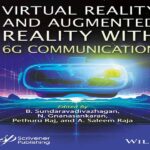
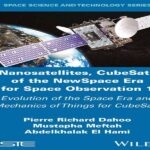
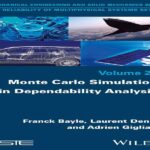


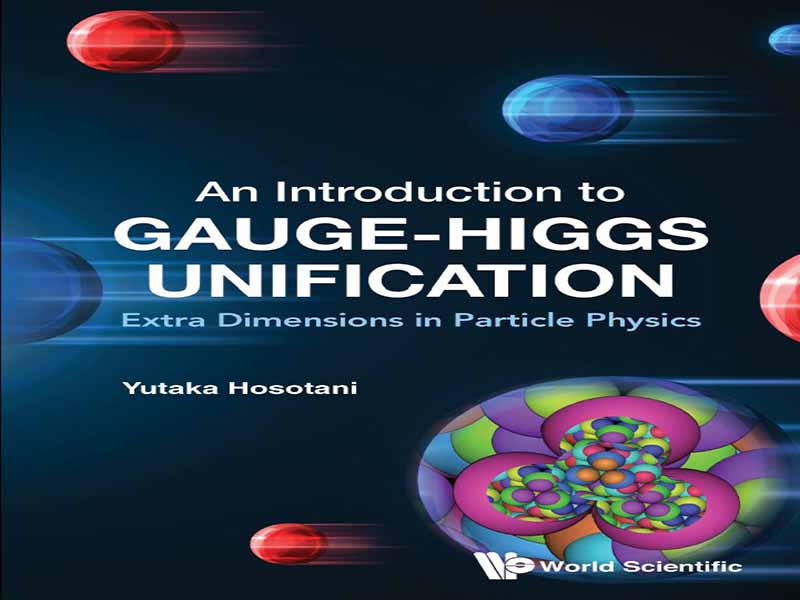




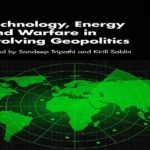

















نظرات کاربران